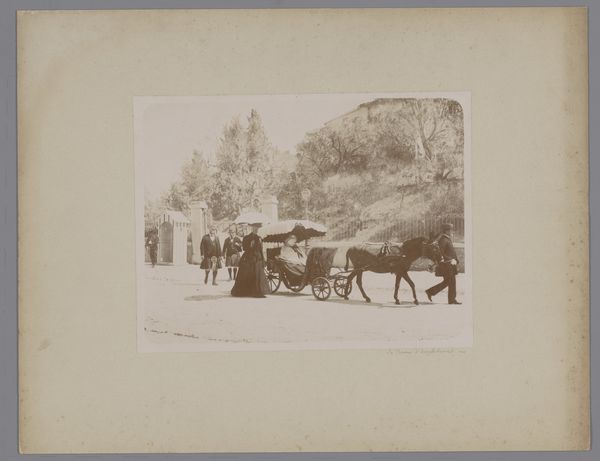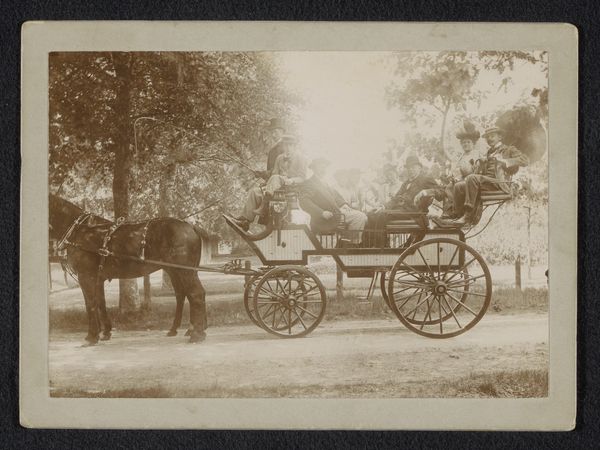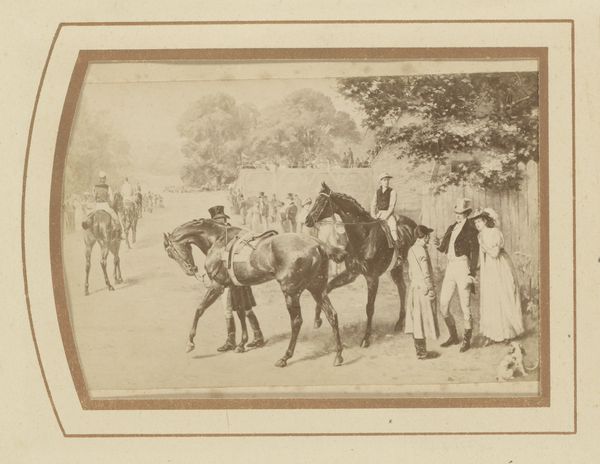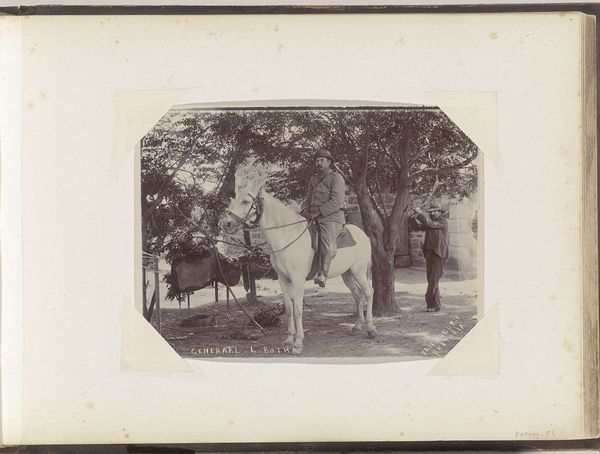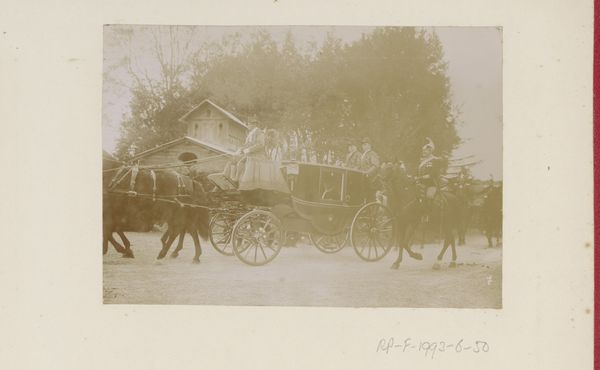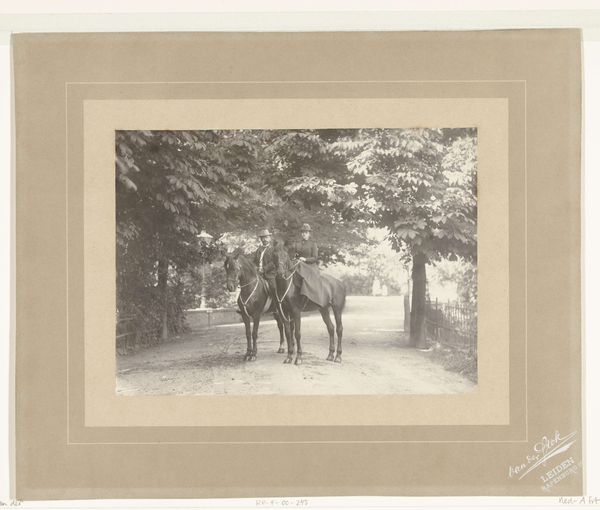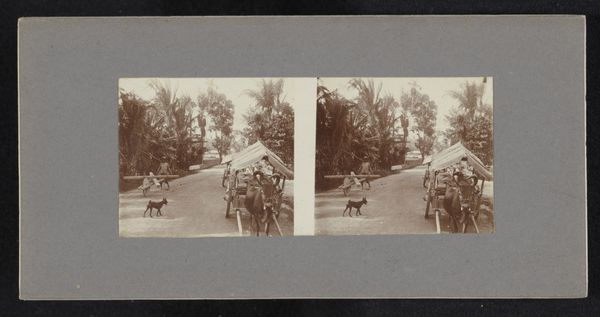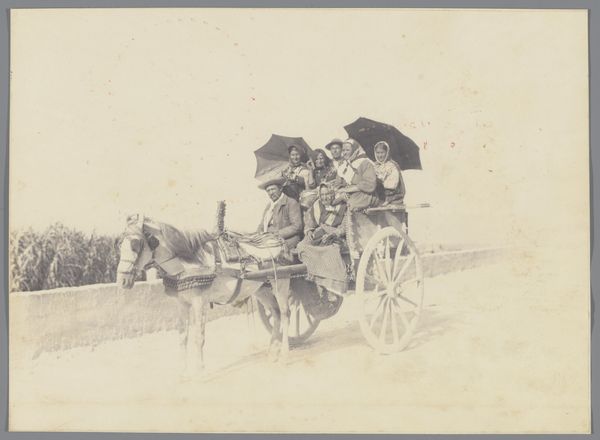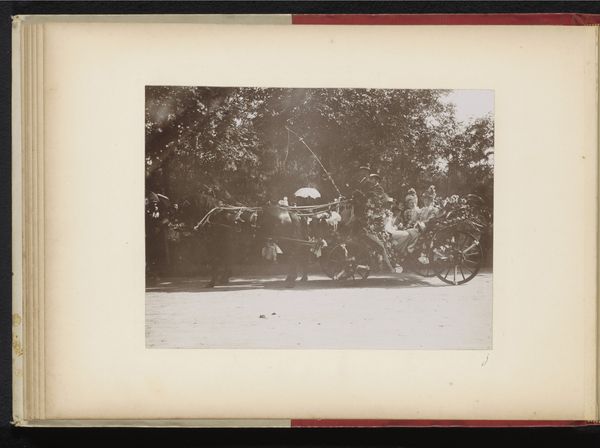
Leden van het Amsterdamsch Studenten Corps in een koets c. 1897
0:00
0:00
Dimensions: height 164 mm, width 223 mm
Copyright: Rijks Museum: Open Domain
Curator: This gelatin-silver print, dating back to around 1897, is attributed to Nicolaas Schuitvlot. The work, titled "Leden van het Amsterdamsch Studenten Corps in een koets," which translates to "Members of the Amsterdam Student Corps in a carriage," resides here at the Rijksmuseum. What are your first thoughts on this romantic era photograph? Editor: My initial impression is of a carefully staged tableau. The arrangement of figures within the carriage and the strong horizontality—countered only by the verticals of the trees in the background—it’s all so deliberately composed. Curator: The context here is critical. Schuitvlot was capturing a very specific segment of Dutch society, the Amsterdam Student Corps. These weren’t just any students, but the elite, largely upper-class members of a prestigious organization. The image, in its original form, would likely have circulated amongst them, reinforcing their social standing and sense of community. It’s a manufactured image of belonging. Editor: Yes, the class dynamics are definitely a silent undercurrent here. But, formally, look at the use of light. Schuitvlot has chosen a time of day that creates strong shadows beneath the carriage, giving it weight and grounding, literally and symbolically. The tonal range he coaxes from this monochrome image is striking; notice the graduation from bright road to darker foliage. Curator: Considering this as genre painting expands my interest. We’re not just seeing a posed portrait; we're getting a glimpse into the rituals and traditions of this social group. I wonder about the role of the photographer, Schuitvlot. Was he commissioned by the Corps? Was this a purely commercial endeavor? These factors influence not just what’s depicted, but how. The production becomes very telling. Editor: Absolutely, and that interplay affects how we, as viewers, decode it today. We can note the careful arrangement, the light, but also the less obvious semiotics of their uniforms, expressions. Everything serves this central idea of belonging. Even the soft focus enhances that idealized impression. Curator: Ultimately, the print represents a moment, constructed and carefully curated, within a closed social circuit. It provides a valuable material record for examining structures and networks within Dutch society at the time. Editor: Indeed, and those observations really amplify my formalist reading, demonstrating how composition and tonality create far more meaning than initially meets the eye.
Comments
No comments
Be the first to comment and join the conversation on the ultimate creative platform.
